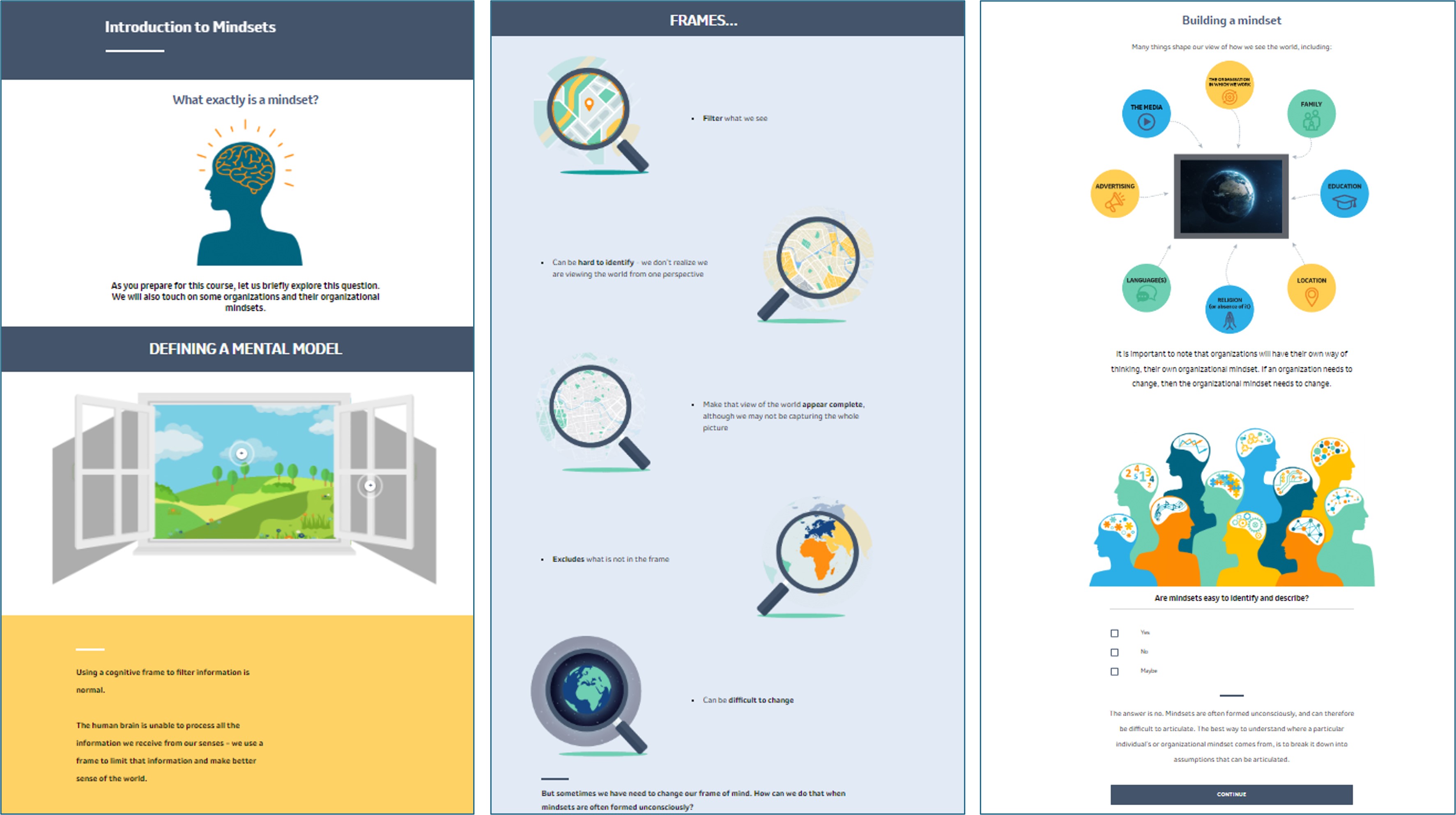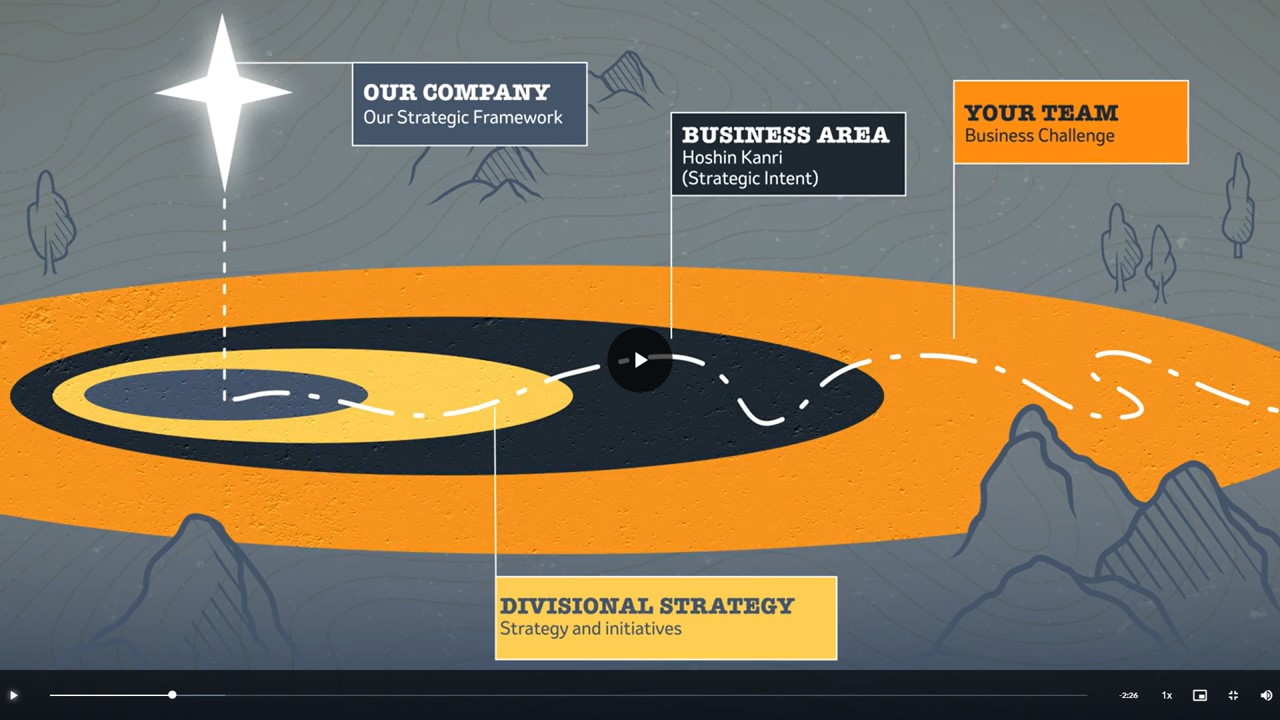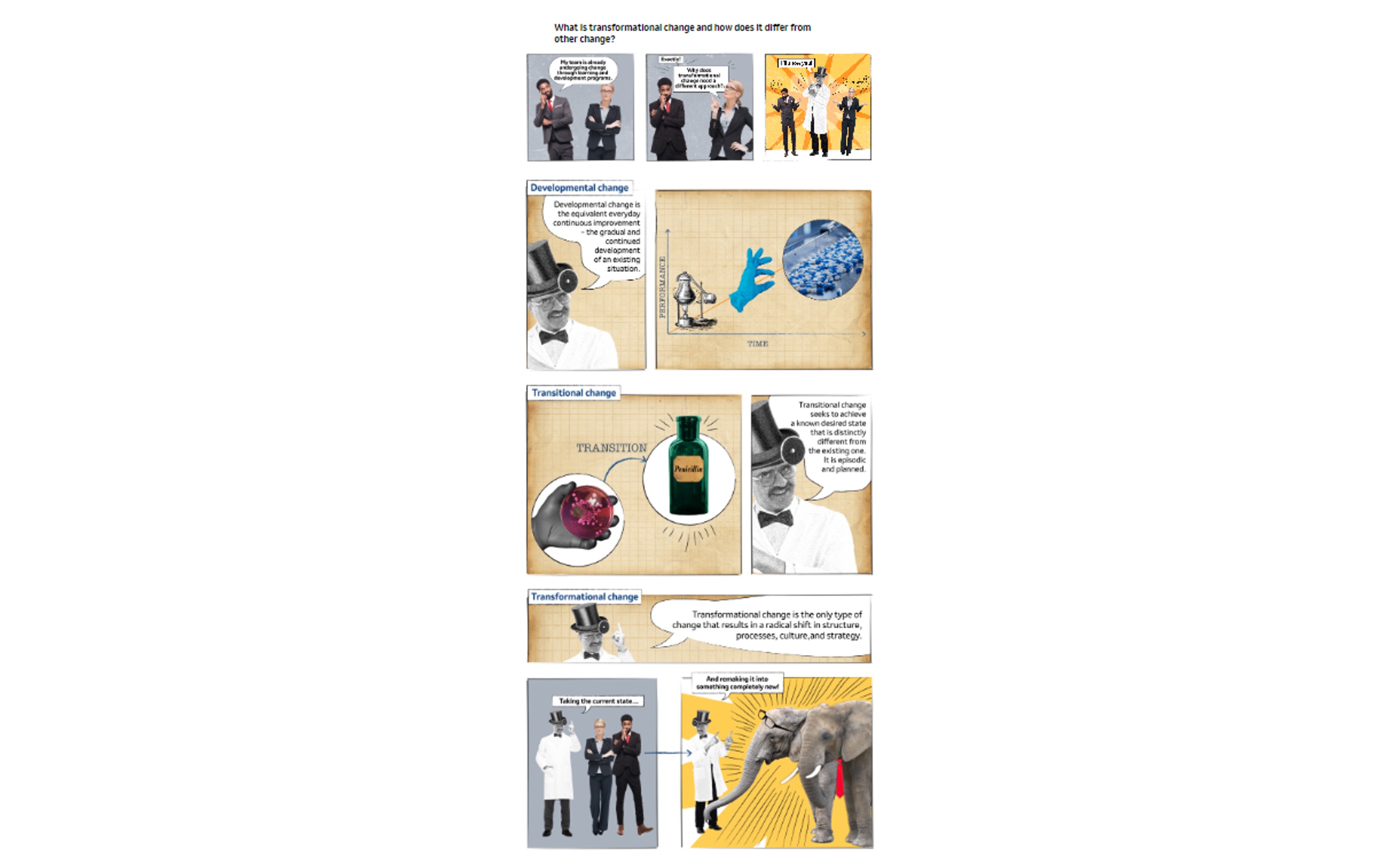Empowering change makers
The most successful organisations stay ahead by fostering innovation. To do this, they need to support ‘transformational change’ in the right places… where it makes strategic sense to challenge and change ingrained ideas.
Transformational change goes deeper than incremental change. When business goals require a different approach, it means that truly innovative leaders need to be ready to embrace new ways of thinking, be open to risk, lean into discomfort, and reimagine business models.
Finding, upskilling and empowering the change-makers
So how do you identify the change-makers within a business, empower them to make the case for change to business leaders, and support them to deliver change through their teams?
Our client, a leading global pharmaceutical company, is nurturing their innovators through an targeted Transformational Change training programme. The programme supports leaders to shift mindsets, and to foster disruptive ideas for transformative change. Crucially, it helps leaders to think about how to align change with the strategic intent of the business.
Reaching the right people
But in a large, global organisation, how do you know who and where these change-leaders are?
How do you reach them?
We worked with our client on a campaign to identify and engage the right people for the Transformational Change programme, communicating its purpose and benefits. The suite of materials needed to:
- Reach those who are leading change that is genuinely transformational (rather than a new system which requires effective operational roll-out but isn’t really demanding a new business model or new way of thinking).
- Engage those people, to understand how the programme could support them to achieve their aims.
- Support them to make the business case to be accepted onto the programme (through a highly selective process).
Designing impactful and targeted communication
The campaign is delivered in four stages:
1. Introduction to mindsets for leading change
An engaging introductory module was created to explain the role of mindsets and behaviours in creating an innovative culture. This is an interactive scroller which posed questions and housed videos and infographics.


2. Videos: Transformational strategy & benefits of the programme
Three short animated videos set out the meaning of transformational change, how to align with organisational strategy, and how the Transformational Change programme supports it.
The first video sets the scene:
“Transformational change is about proactively driving toward the future of our organisation…
It requires a shift in outlook, redefining how we need to think and operate in the future.”
It explains the role the programme plays in helping leaders and teams achieve transformational change.

The second video outlines the programme and how it will help teams:
“The Transformational Change core learning experience is team based and employed to address a specific business challenge that is a strategic priority.”
It describes the core components of the programme, and what it involves for leaders and teams.

The third video is about the business case for transformational change initiatives. Titled “Why align with the Strategic Intent? How can it get you results faster?”, it underlines the importance of keeping business objectives central in developing an innovative culture.

3. Infographic: Evidence for transformational change
What evidence is there to support the Transformational Change approach? A scrolling infographic sets out how the three core principles of strategy, agility and collaboration come together in the programme to enable successful outcomes for teams.

4. Business case builder
All those applying to the Transformational Change programme are required to present a business case to a selection panel. It was an important outcome of the project that applicants are supported and guided with this process. We worked with our client to create a new Business Case Builder – now elevated to an engaging process using Articulate Storyline. Not only does this help applicants structure their case and address key questions, it also uses prompts and tips to encourage thoughtful responses.
This helps leaders articulate why their requirement is genuinely a transformative change, how it will positively impact the business, and how it aligns with strategic intent. Successful applicants can then embark on the programme with a clearer set of objectives. It also saves the selection panels time by making it quicker to pick out the strongest candidates for approval.
Impact
“I truly appreciate this!!! And the team has been very happy with the work you've been doing for us!”
